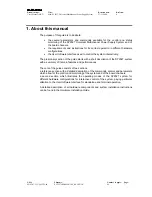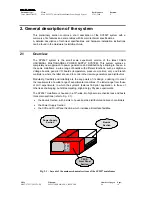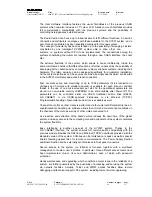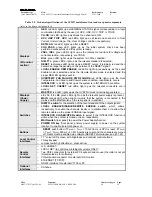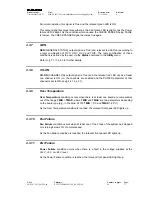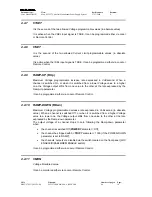
Document type:
Title:
Revision date:
Revision:
User's Manual (MUT)
Mod. SY2527, Universal Multichannel Power Supply System
27/11/2000
0
NPO:
Filename:
Number of pages:
Page:
00103/97:2527y.MUTx/00
SY2527USERMANUAL_REV0.DOC
84
21
4. System and channel control
4.1
Introduction
All the parameters' readout or modification requests coming from different sources (local
control devices, video terminal, H. S. CAENET controller, etc.) are handled by the CPU
of the system. The CPU also monitors the crate general parameters, such as
H.S. CAENET Node address, RS232 Baud Rate, System Alarms and so on.
The current system status is stored in a permanent memory (EEPROM) so that all this
information is not lost at Power-Off.
The Channel Boards as well house a microcontroller with its permanent memory
(EEPROM) where it stores all the channels' parameters values. This feature allows easy
upgrading and expansion of the system: new modules, or custom modules specially
developed to fit the user’s needs, can be added to the system without modifying the
system CPU firmware.
The microcontroller has two main functions:
•
control and monitoring of the channels of the board;
•
communication with the system CPU.
The following sections contain an overview of the commands, parameters and alarms for
the control and monitoring of the system and board channels.
4.2
System control
Several commands are available to control the system. These commands affect all the
channels and can be sent to the system in different ways, depending on the type of
command.
The most common way to forward a command to the system is to sent a proper input
signal through the relevant connector on the front panel; however, for some commands
a hardware input, like a button or a switch, has been foreseen.
The following sections are devoted to the description of the commands available.
Unless differently specified, all input signals mentioned below are referred to a
common ground (COMMON GROUND) and are galvanically insulated up to 150 V
with respect to the ground of the crate (CRATE GROUND).
For further details on electro-mechanical specifications of the components please refer
to the
Technical Specifications
Section in the
Hardware Installation Guide
. A short
summary of all front panel components is also given in Table 2.2 and Table 2.3 at
page 16 and 17, respectively.
For component location on the front panel please refer to the figure in Appendix A.

